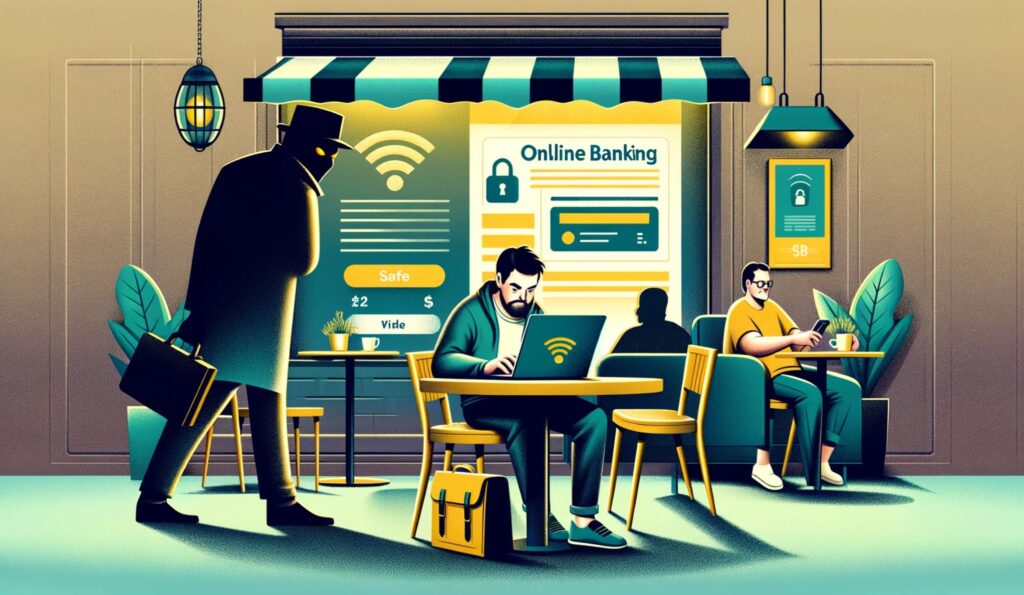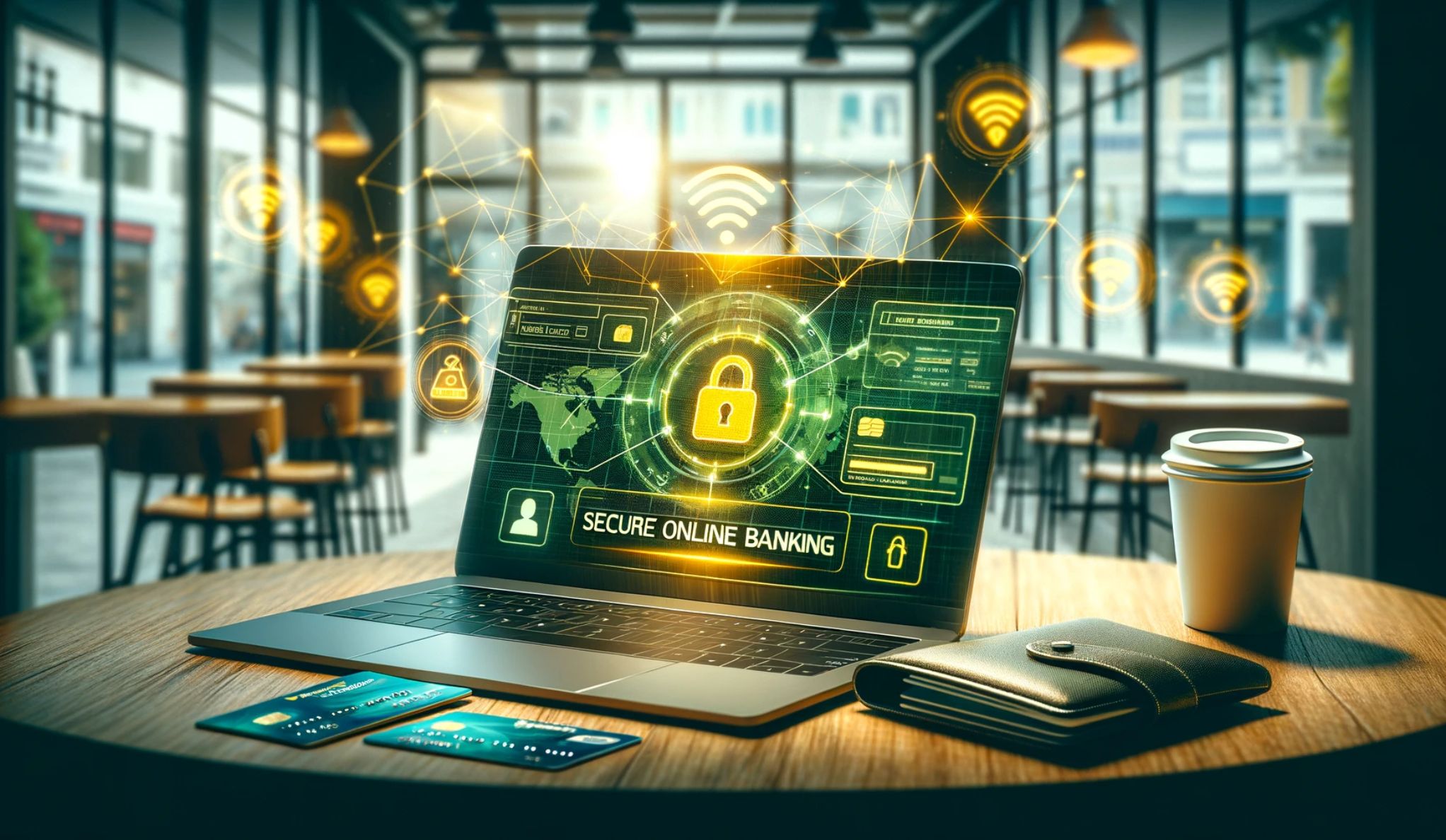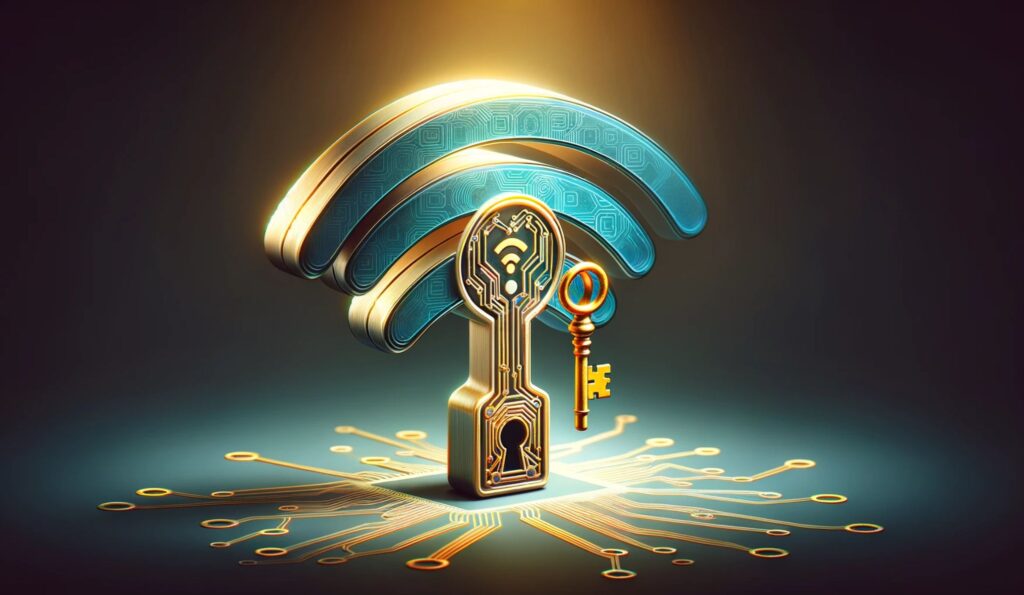In today’s fast-paced world, the convenience of online banking is undeniable. From paying bills to checking account balances, our financial transactions are just a click away. However, this convenience often leads us to access our bank accounts in various places, and one of the most common yet risky places is public Wi-Fi networks.
Public Wi-Fi, available in cafes, airports, and other public spaces, offers a quick way to connect to the internet, but it also opens the door to potential security risks, especially when it comes to sensitive activities like online banking. The allure of managing your finances on the go can be strong, but it’s crucial to understand the risks involved and how to navigate them safely.
In this comprehensive guide, we delve into the world of online banking on public Wi-Fi. We’ll explore why it can be a risky affair, how to identify secure networks, and best practices for safeguarding your financial information. Whether you’re a frequent traveler relying on public Wi-Fi or just occasionally checking your account in a coffee shop, this article aims to arm you with the knowledge and tools you need for secure online banking in any setting. Let’s dive into the world of digital finance and cyber safety, where caution and knowledge are your best allies.
Why Online Banking on Public Wi-Fi is Risky

When it comes to managing your finances online, using public Wi-Fi can expose you to various security risks. These networks, often free and easily accessible, are not always secure. This lack of security makes them a fertile ground for cybercriminals looking to access your sensitive information. Understanding these risks is the first step in protecting yourself and your financial data.
Common Security Threats
Public Wi-Fi networks are particularly vulnerable to security threats due to their often minimal security protocols. The most common threats include:
- Man-in-the-Middle Attacks: Cybercriminals can intercept the data transferred between your device and the bank’s server. This interception can lead to the theft of login credentials, financial information, and personal data.
- Malware Distribution: Unsecured Wi-Fi networks can be used to spread malware. Once your device is infected, it can compromise your banking information.
- Wi-Fi Snooping and Sniffing: Hackers can use special software to eavesdrop on your Wi-Fi signal. This technique allows them to view everything you do online, from the websites you visit to the information you input.
The Dangers of Data Interception
Data interception is a significant risk when using public Wi-Fi for online banking. In such cases, your sensitive information, including passwords and account numbers, can be easily intercepted by cybercriminals. This interception typically happens in two ways:
- Unencrypted Networks: If a Wi-Fi network doesn’t encrypt the data being transmitted, any information you send or receive can be viewed by others.
- Fake or Rogue Wi-Fi Networks: These are Wi-Fi connections set up by hackers that mimic legitimate networks. Once connected, all your data passes through the hacker’s system, giving them easy access to your personal information.
To stay safe, it’s crucial to be aware of these risks and take proactive steps to protect your information. This includes avoiding online banking on public Wi-Fi whenever possible and using secure methods like VPNs if you must connect to public networks.
How to Identify Secure Wi-Fi Networks for Banking
When you find yourself needing to access your bank account online and only public Wi-Fi is available, it’s crucial to ensure that the network is as secure as possible. Identifying a secure Wi-Fi network can significantly reduce the risks associated with online banking in public places. Here are some key factors to consider to determine the safety of a public Wi-Fi network.
Signs of a Safe Network
To assess if a public Wi-Fi network is safe enough for online banking, look for the following signs:
- Network Encryption: Check if the network uses WPA3 or WPA2 encryption. This information is often visible when connecting to the network.
- Official and Verified Networks: Always use Wi-Fi provided by reputable sources. For instance, Wi-Fi networks offered by known cafes or libraries are generally safer.
- Avoid Networks with Suspicious Names: Steer clear of networks with odd or generic names like ‘Free Wi-Fi’ or ‘Click Here for Internet.’ These are often traps set by hackers.
Remember, even if a network meets these criteria, it’s still safer to avoid accessing sensitive information like bank accounts unless absolutely necessary.
The Role of Network Authentication in Security
Network authentication plays a critical role in the security of a Wi-Fi network. Here’s why:
- Authentication Requirement: A secure network typically requires users to create an account or enter a password specific to the network. This layer of security helps keep unauthorized users out.
- Verification Process: Networks that undergo a verification process by the provider are more likely to be secure. This process often includes regular security updates and monitoring.
- Terms and Conditions Agreement: While often overlooked, reading the terms and conditions of a Wi-Fi network can provide insights into how the network is managed and any data protection measures in place.
By understanding these aspects, you can make an informed decision about the safety of a public Wi-Fi network for online banking. Remember, when in doubt, it’s better to use your mobile data or wait until you can access a trusted network.
Best Practices for Safe Online Banking
Engaging in online banking, particularly on public Wi-Fi, demands a heightened level of caution and the implementation of best practices to ensure your financial data remains secure. By adopting these practices, you can significantly minimize the risks associated with online banking.
Using VPNs for Enhanced Security
A Virtual Private Network (VPN) is an essential tool for enhancing your online security, especially when using public Wi-Fi. Here’s how a VPN can protect you:
- Encrypted Connection: VPNs encrypt the data that travels between your device and the VPN server. This encryption makes it difficult for hackers to intercept and understand your data.
- Secure Access: By routing your internet connection through a secure server, VPNs ensure that your online banking activities are shielded from prying eyes.
- Anonymity and Privacy: VPNs mask your IP address, providing an additional layer of privacy and protecting your identity online.
Using a VPN while banking online on public Wi-Fi adds an essential layer of security, keeping your sensitive financial information safe from cyber threats.
Verifying Bank’s Security Protocols
Ensuring that your bank’s website or app uses secure connections is critical for safe online banking. Here’s what you need to check:
- HTTPS Protocol: Always look for ‘https’ at the beginning of your bank’s website URL. The ‘s’ stands for ‘secure’ and indicates that the connection is encrypted.
- Security Certificates: Check for valid security certificates on the bank’s website. These certificates are a sign that the site is legitimate and secure.
- Two-Factor Authentication: Opt for banks that offer two-factor authentication (2FA) for login. This adds an additional layer of security beyond just a password.
By making sure that your bank employs these security protocols, you can further safeguard your personal and financial information from potential cyber threats. Remember, a secure banking environment is a collaborative effort between you and your bank.
Alternatives to Public Wi-Fi for Online Banking
While public Wi-Fi is convenient, it’s not always the safest option for online banking. Fortunately, there are safer alternatives that provide both convenience and security. Understanding these options can help you make smarter decisions about where and how to conduct your financial transactions online.
Benefits of Cellular Data for Banking
Using cellular data for online banking is a more secure alternative compared to public Wi-Fi. Here’s why:
- Enhanced Security: Cellular networks are generally more secure than public Wi-Fi because they use encryption protocols that are more difficult for hackers to breach.
- Less Vulnerability to Attacks: Unlike public Wi-Fi, cellular networks are less susceptible to common cyber threats like man-in-the-middle attacks.
- Reliability: Cellular data connections are typically more reliable, ensuring a stable banking session without the risks of unsecured public networks.
While it may consume your data plan, the security benefits offered by cellular networks make it a worthwhile choice for managing sensitive financial tasks.
When to Choose Home Networks Over Public Wi-Fi
Home networks, when set up with proper security measures, offer a much safer environment for online banking than public Wi-Fi. Consider the following advantages:
- Controlled Access: You have control over who accesses your home network, reducing the risk of unauthorized intrusion.
- Custom Security Settings: Home networks allow for customized security settings, including strong passwords and the latest encryption standards.
- Network Familiarity: Being familiar with your home network and the devices connected to it makes it easier to identify and address potential security risks.
Using a private, home network for online banking transactions, especially those involving sensitive data, is a smart practice. It combines the comfort of banking from home with the assurance of a secure network, providing peace of mind.
What To Do If You Must Use Public Wi-Fi

There may be situations where you have no choice but to use public Wi-Fi for online banking. In such cases, it’s vital to take extra precautions to protect your financial information. Adopting a cautious approach and following certain steps can significantly reduce the risks.
Essential Steps for Safe Banking on Public Networks
If you find yourself needing to use public Wi-Fi for banking, consider these practical tips to minimize risks:
- Use a VPN: As mentioned earlier, a Virtual Private Network (VPN) encrypts your internet connection, adding a layer of security to your online activities.
- Avoid Automatic Connections: Disable your device’s setting that automatically connects to available Wi-Fi networks. This prevents connecting to insecure or suspicious networks unknowingly.
- Verify the Network’s Legitimacy: Always confirm that the Wi-Fi network is officially provided by the establishment and not a look-alike set up by cybercriminals.
Remember, these steps don’t completely eliminate the risks but significantly reduce them.
Monitoring and Responding to Suspicious Activities
Staying vigilant about your account activities is crucial, especially if you’ve used public Wi-Fi for banking. Here’s what you can do:
- Regularly Check Bank Statements: Keep an eye on your bank statements for any unauthorized transactions. Early detection of suspicious activity is key to preventing further issues.
- Set Up Alerts: Many banks offer the option to set up alerts for various types of transactions. This can be an effective way to stay informed about your account activity.
- Immediate Action: If you notice any unusual activity, contact your bank immediately. Quick response can prevent further unauthorized access to your account.
By actively monitoring your accounts and responding promptly to any anomalies, you can safeguard your financial information against potential threats encountered on public Wi-Fi networks.
Educating Yourself About Wi-Fi Banking Risks
Gaining knowledge about the risks associated with Wi-Fi banking is a crucial step toward safeguarding your financial data. In the ever-evolving landscape of online banking, staying informed helps in recognizing and mitigating potential threats.
Understanding the Technical Aspects
Understanding the technical risks of using public Wi-Fi for banking doesn’t require expert knowledge, but a basic awareness is essential. Public Wi-Fi networks often lack strong encryption, making it easier for hackers to access your data. The openness of these networks means your confidential banking information is at a higher risk of being intercepted. Additionally, the shared nature of public Wi-Fi increases the chances of encountering cyber threats. Being aware of these factors can help you in making cautious decisions while using public networks for banking transactions.
Staying Updated on Latest Security Trends
The world of cybersecurity is dynamic, with new threats and protective measures emerging regularly. Keeping up-to-date with these changes is crucial. Cyber threats are continually evolving; tactics that were considered secure in the past may now be vulnerable. As these threats change, so do the methods to combat them. By staying informed about the latest developments in cybersecurity, you can adopt the most effective strategies to protect your financial data. This continual learning process enables you to make well-informed decisions about managing your online banking activities, especially when using public Wi-Fi.
FAQs
While using public Wi-Fi, there is always a heightened risk compared to private, secure networks. However, if you must use public Wi-Fi, employing security measures like using a VPN, verifying the network, and monitoring your accounts can significantly reduce the risks.
A VPN (Virtual Private Network) encrypts the data sent from your device to the internet, which helps in protecting your sensitive information from being intercepted by hackers on public Wi-Fi networks.
If you detect any unusual activity in your bank account, contact your bank immediately. It’s important to act quickly to prevent any further unauthorized access or transactions.
Yes, generally, mobile data connections are considered safer than public Wi-Fi for online banking because they are encrypted and less susceptible to common cyber threats like man-in-the-middle attacks.
Conclusion
Navigating the risks of online banking on public Wi-Fi requires both awareness and proactive measures. While the convenience of accessing your bank account on the go is undeniable, it’s accompanied by significant security risks. Understanding these risks, from the potential of data interception to the vulnerabilities of public networks, is the first step in protecting yourself. Employing best practices like using VPNs, verifying secure connections, and choosing safer alternatives like cellular data or home networks can greatly enhance your security. Furthermore, staying informed about the latest cybersecurity trends and educating yourself about the technical aspects of Wi-Fi banking risks empowers you to make safer decisions. Remember, the responsibility of safeguarding your financial information is a continuous process that extends beyond the boundaries of your bank’s security measures. By taking these precautions and remaining vigilant, you can enjoy the benefits of online banking with greater peace of mind, even when you’re connected to public Wi-Fi.








